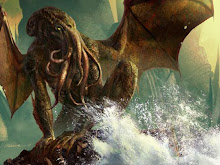
The "Original Six" teams in the NHL are the Montréal Canadiens, NY Rangers, Chicago Blackhawks, Boston Bruins, Detroit Red Wings, and the Toronto Maple Leafs. Prepare to have your mind blown: out of the "Original Six," only the Canadiens and the Toronto Maple Leafs (called the Blue Shirts, then the Arenas, then the St. Patricks, then the Maple Leafs) were around when the NHL started in 1917. The Bruins were formed in 1924; the remaining 3 teams joined in 1926. By this time there were 10 teams. Here are the other 4:
Pittsburgh Pirates (1925-1929, 1930: as Philadelphia Quakers; 0 Stanley Cups)

Ottawa Senators (1917-1933 excluding 1931, 1934: as St. Louis Eagles; 4 Stanley Cups)

New York Americans (1919: as Québec Bulldogs, 1920-1924: as Hamilton Tigers, 1925-1941; 0 Stanley Cups)

Montréal Maroons (1924-1938; 2 Stanley Cups)

So what happened to all these teams? The Great Depression killed the Pittsburgh Pirates, the Montréal Maroons, and the Ottawa Senators, reducing the league to 8 teams by 1935. The Maroons attempted for several years to move the team to Philadelphia, but could not find a suitable arena and officially folded in 1947, though they hadn't played since 1938. The New York Americans were struggling financially as well, but did not fold. When World War II hit (remember, Canada entered the war long before the US) 90 players from the NHL quit hockey to fight for Canada. As a result, the New York Americans didn't have enough players to compete in the 1942-43 season and were suspended.
The six remaining teams are still around today. The term actually comes from the 1967 NHL Expansion when the California Golden Seals (who eventually moved to Cleveland as the Barons then merged with the North Stars), Los Angeles Kings, Minnesota North Stars, Philadelphia Flyers, Pittsburgh Penguins, and St. Louis Blues were added.


